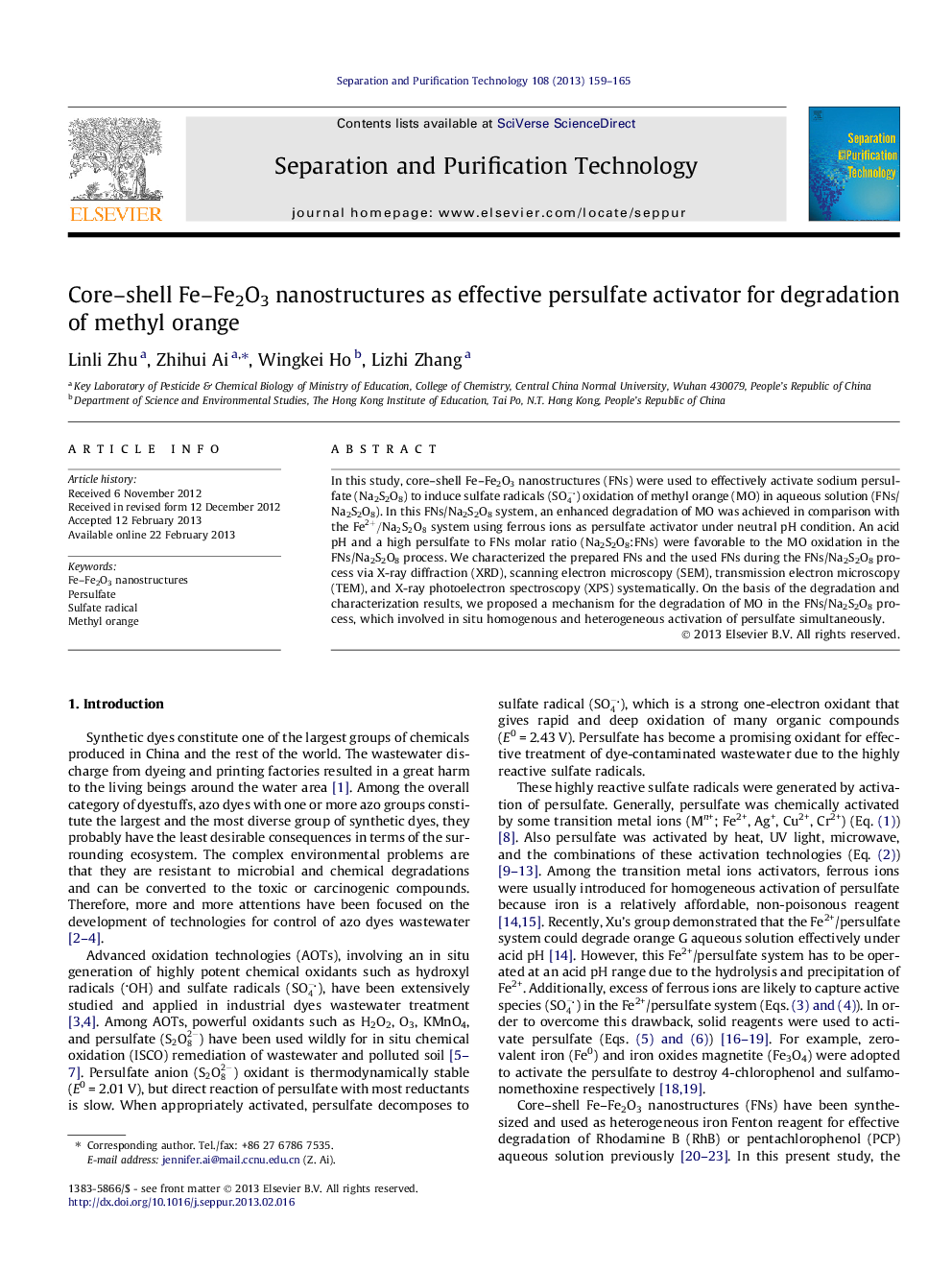| کد مقاله | کد نشریه | سال انتشار | مقاله انگلیسی | نسخه تمام متن |
|---|---|---|---|---|
| 641875 | 1457011 | 2013 | 7 صفحه PDF | دانلود رایگان |

In this study, core–shell Fe–Fe2O3 nanostructures (FNs) were used to effectively activate sodium persulfate (Na2S2O8) to induce sulfate radicals (SO4-) oxidation of methyl orange (MO) in aqueous solution (FNs/Na2S2O8). In this FNs/Na2S2O8 system, an enhanced degradation of MO was achieved in comparison with the Fe2+/Na2S2O8Fe2+/Na2S2O8 system using ferrous ions as persulfate activator under neutral pH condition. An acid pH and a high persulfate to FNs molar ratio (Na2S2O8:FNs) were favorable to the MO oxidation in the FNs/Na2S2O8 process. We characterized the prepared FNs and the used FNs during the FNs/Na2S2O8 process via X-ray diffraction (XRD), scanning electron microscopy (SEM), transmission electron microscopy (TEM), and X-ray photoelectron spectroscopy (XPS) systematically. On the basis of the degradation and characterization results, we proposed a mechanism for the degradation of MO in the FNs/Na2S2O8 process, which involved in situ homogenous and heterogeneous activation of persulfate simultaneously.
► FNs could activate Na2S2O8 to generate sulfate radicals effectively.
► FNs/Na2S2O8 system showed an enhanced activity on degradation of MO.
► Sulfate radicals were responsible for degradation of MO in the FNs/Na2S2O8 system.
Journal: Separation and Purification Technology - Volume 108, 19 April 2013, Pages 159–165